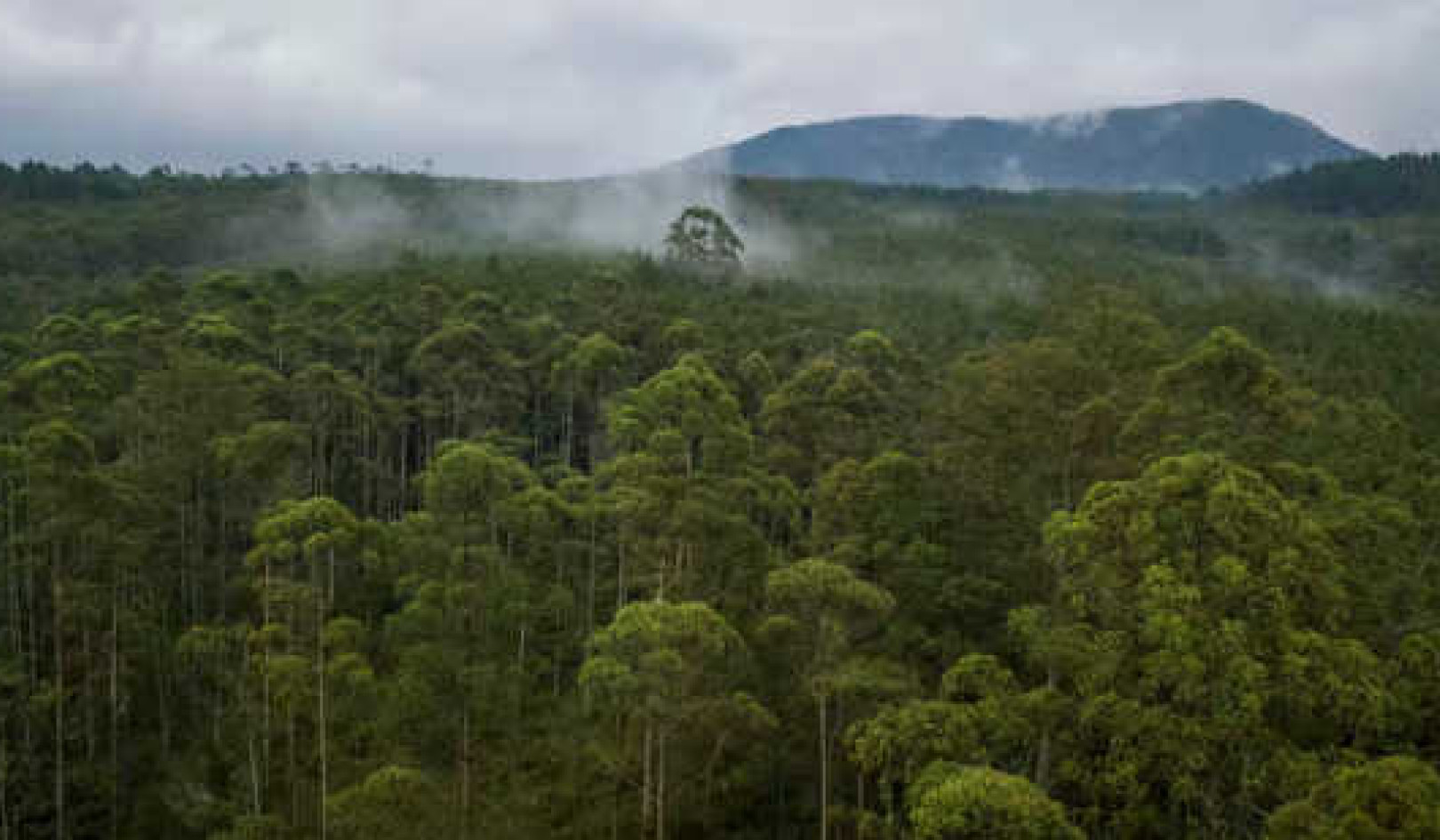When it comes to sea level rising by feet or meters, the biggest fear is melting mountains of ice piled up on Antarctica. Recently NASA scientist Eric Rignot told us those glaciers are melting six times faster now than in the 1950’s. In another just-published paper, scientists discovered the marriage of two forces making that happen. This could determine the future map of the world, as disastrous sea flooding invades farmlands, cities, and whole nations.
The science is challenging. It involves a 34 million year history of Antarctic ice, tiny single-celled animals, carbon dioxide, and the astronomical place of Earth in space. All of that.
Fortunately we have lead author Dr. Richard Levy here to help. Dr. Levy is a Paleoclimate Scientist and Programme Leader at New Zealand’s GNS Science, a government Crown Corporation. Levy is a veteran of scientific expeditions to Antarctica, with many papers about the coldest continent on Earth. He is the co-author of “Antarctic ice-sheet sensitivity to obliquity forcing enhanced through ocean connections” as published in Nature Geoscience 2019.
Show by Radio Ecoshock, reposted under CC License. Episode details at https://www.ecoshock.org/2019/01/big-trouble-at-the-poles.html
Stop Fossil Fuels researches and disseminates effective strategies and tactics to halt fossil fuel combustion as fast as possible. Learn more at https://stopfossilfuels.org
SHOW NOTES
Normally I recommend listeners go straight to the science published in the journals. In this case, I think you should start with a great summary published at phys.org: “Antarctic ice sheet could suffer a one-two climate punch”. Without understanding scientific terms like “obliquity”, you might miss the importance of Levy’s work without this article by Devitt, and my Radio Ecoshock interview.
To understand the underlying astronomical cause of changes in Antarctic ice, we need to grasp Milankovitch cycles: "the collective effects of changes in the Earth’s movements on its climate over thousands of years. The term is named for Serbian geophysicist and astronomer Milutin Milankovic. In the 1920s, he hypothesized that variations in eccentricity, axial tilt, and precession of the Earth’s orbit resulted in cyclical variation in the solar radiation reaching the Earth, and that this orbital forcing strongly influenced climatic patterns on Earth."
OBLIQUITY OR AXIAL TILT
“The angle of the Earth’s axial tilt with respect to the orbital plane (the obliquity of the ecliptic) varies between 22.1 and 24.5°, over a cycle of about 41,000 years. The current tilt is 23.44°, halfway between its extreme values. The tilt last reached its maximum in 8,700 BCE. It is now in the decreasing phase of its cycle, and will reach its minimum around the year 11,800 CE.
Increased tilt increases the amplitude of the seasonal cycle in insolation, providing more solar radiation in each hemisphere’s summer and less in winter. However, these effects are not uniform everywhere on the Earth’s surface. Increased tilt increases the total annual solar radiation at higher latitudes, and decreases the total closer to the equator.
The current trend of decreasing tilt, by itself, will promote milder seasons (warmer winters and colder summers), as well as an overall cooling trend. Because most of the planet’s snow and ice lies at high latitude, decreasing tilt may encourage the onset of an ice age for two reasons: There is less overall summer insolation, and also less insolation at higher latitudes, which melts less of the previous winter’s snow and ice.”
ANTARCTIC SEA ICE MAY DETERMINE THE FATE OF COASTAL CITIES AROUND THE GLOBE
Richard Levy tell us: “Antarctica turns out to be way more sensitive to climate change than was previously thought.” And the key, key factor is the state of Antarctic sea ice. That southern pole sea ice was staying strong, even growing a little since 2014. Since then, it has begun a decline every year, likely including this one. The sea ice serves as “buttress”, a block that slows down the flow of Antarctic glaciers into the ocean.
When sea ice melts it is like an ice-cube in your glass because sea ice does not raise sea level. But ice from the big glaciers can put sea levels up at least 20 meters, or 75 feet higher. Imagine that. Richard Levy says their data suggests that in previous times, when the world was 1.5 degrees warmer (than pre-industrial) sea levels were 6 to 9 meters higher than they are now. We may already have a long way to go, as the seas relentlessly rise over the next centuries.
We know from the study led by Eric Rignot that Antarctica is already losing ice mass, at a rate 6 times greater than in the 1950’s. Antarctica is melting. It will melt even faster as the sea ice there continues to shrink.
This paper provides a double-checked visual graphic of the last 34 million years of the Antarctic ice sheet. That time map can be used by a lot of other scientists, and amateur climate bloggers like myself.
Antarctic Ice Double-Whammy: Sea Level Rise—Interview w/Dr. Richard Levy—Radio Ecoshock 2019-01-31
Thanks for visiting InnerSelf.com, where there are 20,000+ life-altering articles promoting "New Attitudes and New Possibilities." All articles are translated into 30+ languages. Subscribe to InnerSelf Magazine, published weekly, and Marie T Russell's Daily Inspiration. InnerSelf Magazine has been published since 1985.


Thanks for visiting InnerSelf.com, where there are 20,000+ life-altering articles promoting "New Attitudes and New Possibilities." All articles are translated into 30+ languages. Subscribe to InnerSelf Magazine, published weekly, and Marie T Russell's Daily Inspiration. InnerSelf Magazine has been published since 1985.

4 Sustainable Wardrobe Tips for a Greener Closet
Looking to refresh your wardrobe sustainably? These 4 tips for a sustainable wardrobe will help you embrace eco-friendly fashion by buying better, repairing, reusing, and choosing natural...

What Is Intolerance Fatigue and How Does It Fuel Protests?
Protesters remain on the streets demanding equality and justice for Black Americans. What they’re feeling, I believe, is something I call “intolerance fatigue.”

Indonesia Can Fight Against Climate Change With These 2 Solutions
Indonesia can become a significant global player in tackling the climate crisis if it optimises the work of protecting and rehabilitating forests. This is because the country is home to Asia’s...

Why It Could Take Two Years For The Economy To Recover From The Coronavirus Pandemic
Predictions about the effects of the coronavirus pandemic on the world’s economy arrive almost daily. How can we make sense of them in the midst of this economic storm?

America on the Brink: A Rational Explanation
Before reflecting on the stakes of this crisis, however, we should consider its deeper roots.

Why Trigger Warnings Don’t Help People Cope With Distressing Material
The use of trigger warnings has since spread. The warnings have become another battlefield in the culture wars, with many seeing them as threatening free speech and the latest sign of ‘political...






















